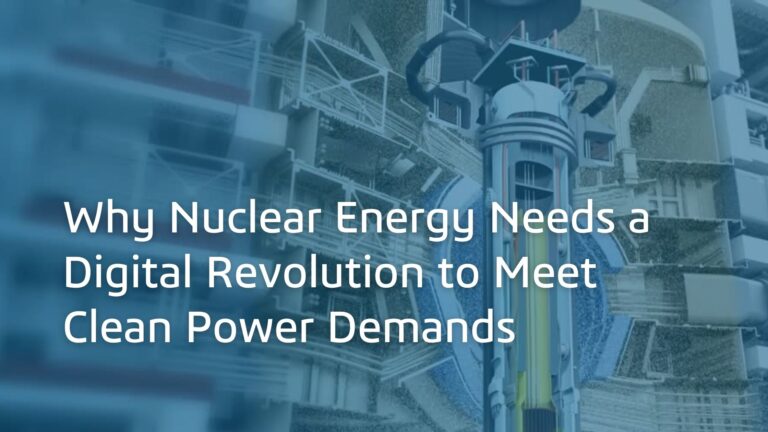Unlocking the full potential of nuclear power with data-driven collaboration, simulation, and smarter project delivery.
The world is at a pivotal moment in its clean energy transition. With electrification accelerating across sectors and the pressure to decarbonize mounting, reliable low-carbon power sources have never been more vital. Nuclear energy is stepping back into the spotlight as a stable, scalable solution to meet this demand, but legacy challenges threaten to stall its progress.
To unlock nuclear’s full potential, the industry must undergo its transformation—one powered by digitalization.
The Case for Nuclear Has Never Been Stronger
Projections indicate that global electricity demand will double or even triple by 2050. With coal being phased out and renewables subject to intermittency, nuclear energy offers a unique advantage: round-the-clock base-load power with virtually no carbon emissions. Advanced technologies like small modular reactors (SMRs) and next-generation fission designs make nuclear power more flexible and cost-effective than ever before.
Yet despite this promise, nuclear projects continue to face the same stubborn hurdles: lengthy timelines, cost overruns, regulatory delays, and public skepticism. Industry data shows that power and utility megaprojects experience delays in 64% of cases and budget overruns in 57% of cases. These inefficiencies risk derailing efforts to meet climate targets and deliver secure energy systems.
Outdated Project Delivery Models Are Holding Us Back
Traditional nuclear project delivery has not kept pace with the scale and urgency of today’s energy transition. Engineering is fragmented across disciplines. Stakeholders work in silos. Requirements evolve faster than teams can align. Decision-making often lacks the data to be fully informed.
This siloed approach increases the risk of miscommunication, delays, and costly rework during construction and commissioning. It also makes it harder to adapt to regulatory changes or stakeholder feedback, key concerns for nuclear developers.
A Digital Shift Is Not Optional. It’s Strategic
Digital transformation can address these bottlenecks head-on. With virtual twin technology, stakeholders can collaboratively design, simulate, and validate a nuclear facility in a unified digital environment before anything is physically built. This allows teams to spot potential issues, optimize plans, and demonstrate compliance in advance.
A virtual twin is more than just a 3D model. It is a dynamic, behavior-driven replica of a real-world system that incorporates engineering, operational, and regulatory data. It provides a full view of how changes in one part of the system impact everything else, reducing uncertainty and enabling faster, smarter decisions.
Faster, Smarter, Safer Nuclear
By leveraging virtual twins and integrated data platforms, nuclear projects can:
- Improve project readiness and stakeholder alignment
- Simulate complex systems and mitigate risks early
- Accelerate permitting and licensing with clear traceability
- Create confidence in investors and regulators through data-driven plans
These capabilities are no longer optional, they are critical to delivering nuclear projects at the speed and scale required for global net-zero goals.
Ready to accelerate your SMR journey?
Digitalization isn’t just a tech upgrade; it’s the foundation for building trust, speed, and resilience into the next generation of nuclear energy. Find out how some companies are using technology to improve their business in our new ebook.
The Clean Energy Transformation: How the Nuclear Industry Can Meet Growing Demand with Digitalization.

